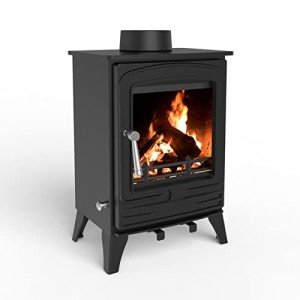The Benefits and Considerations of Multi-Fuel Wood Burners
Intro
As energy rates continue to rise and issues about environmental effects grow, numerous property owners are seeking efficient and sustainable heating options. Multi-fuel wood burners have actually gained appeal recently for their flexibility and efficiency. These flexible heating options permit homeowners to use numerous types of fuel, including wood, coal, and other biomass. In this post, we will explore the advantages, functions, and factors to consider of multi-fuel wood burners, together with some often asked concerns and ideas for use.
What is a Multi-Fuel Wood Burner?
A multi-fuel wood burner is a stove or fireplace designed to burn different types of fuel, including:
- Seasoned wood logs
- Wood pellets
- Coal
- Coke
- Peat
This flexibility permits users to adapt their heating sources based on availability, cost, and personal preference!
Features of Multi-Fuel Wood Burners
Multi-fuel wood burners feature a number of features that boost their efficiency and user experience. These might consist of:
- Airwash System: Keeps the glass clean for a clearer view of the flames.
- Heat Exchanger: Improves efficiency by moving more heat to the room.
- Chimney Control: Regulates airflow and smoke output.
- Robust Grate: Allows ash from coal to fall through, making sure better air circulation.
Advantages of Multi-Fuel Wood Burners
The advantages of installing a multi-fuel wood burner surpass just heating. Here are some main advantages:
1. Flexibility
The ability to burn different types of fuel means that users can adjust to changing conditions. For instance, if wood ends up being scarce during winter, one can conveniently switch to coal.
2. Cost-Effectiveness
In numerous areas, the expense of wood and coal can considerably differ with the seasons. Multi-fuel burners offer the versatility to pick the most affordable and most readily available fuel.
3. Ecological Impact
Using eco-friendly resources, like skilled wood, can minimize carbon footprints. Multi-fuel wood burners tend to produce lower emissions when utilizing cleaner fuels.
4. Reliability
Having an option to switch fuel types suggests that homeowners are less most likely to be affected by shortages. Additionally, well-maintained units provide a consistent source of heat.
5. Aesthetic Appeal
Many multi-fuel wood burners include an attractive style that enhances the interior decor of a home, providing not just heat however likewise a comfortable atmosphere.
Downsides to Consider
While multi-fuel wood burners provide numerous benefits, they also have some disadvantages:
- Installation Costs: Initial installation can be more pricey compared to simpler wood-burning stoves.
- Upkeep: They need regular upkeep and cleansing, especially if burning coal, to keep the system running effectively.
- Area Requirements: Some models might require more space than conventional wood stoves.
Using a Multi-Fuel Wood Burner Efficiently
Optimizing the effectiveness of a multi-fuel wood burner needs some knowledge and practices. Here are tips for reliable use:
- Choose Quality Fuel: Opt for well-seasoned wood or high-quality coal to guarantee much better combustion and energy output.
- Correct Maintenance: Clean the stove and chimney regularly to prevent buildup of creosote and guarantee good airflow.
- Change Airflow: Learn to manage the air flow to tweak the heat output according to your needs.
Table: Comparison of Fuel Types for Multi-Fuel Burners
| Fuel Type | Pros | Cons | Best Use |
|---|---|---|---|
| Seasoned Wood | Eco-friendly, good heat output | Requires storage, can produce smoke | Primary heating source |
| Wood Pellets | High performance, low emissions | More costly, requires a pellet stove | Secondary heating source |
| Coal | High heat output, longer burn times | Pollutants, more ecological constraints | Backup heating source |
| Coke | High performance, really little smoke | Hard to discover, pricey | Industrial applications |
| Peat | Sustainable and renewably sourced | Lower heat output, smells when burning | Specific regional preferences |
Regularly Asked Questions (FAQs)
1. Can all multi-fuel wood burners burn wood and coal at the same time?
No, multi-fuel wood burners are normally designed to burn one type of fuel at a time. Nevertheless, some might permit a mix of fuels but inspect the manufacturer's standards.
2. How do I preserve my multi-fuel wood burner?
Routine upkeep includes cleaning the burn chamber, ash pan, chimney, and glass doors. It's recommended to have a professional evaluation every year.
3. Are multi-fuel wood burners energy efficient?
Yes, multi-fuel wood burners can be energy effective, particularly when utilizing experienced wood or premium pellets. Mixed Fuel Stove differ by design, so research before buying.
4. Do I need a special chimney for a multi-fuel wood burner?
Most multi-fuel wood burners can use standard chimneys, but some might need a chimney that is specifically ranked for the kind of fuel being burned. Examine with an expert installer for suggestions.
5. Can I convert a standard wood burner to a multi-fuel burner?
In a lot of cases, this isn't practical. However, seek advice from a professional installer to go over alternatives based on specific models and designs.
Multi-fuel wood burners provide an excellent alternative for those looking to balance cost, efficiency, and environmental effect in their home heating solutions. With Multi Fuel Stove Burner to use various fuel types, these burners offer flexibility and dependability while improving the visual appeal of a home. By thinking about the advantages and disadvantages, practicing correct upkeep, and using reliable heating tips, property owners can delight in the benefits of a multi-fuel wood burner for several years to come.

